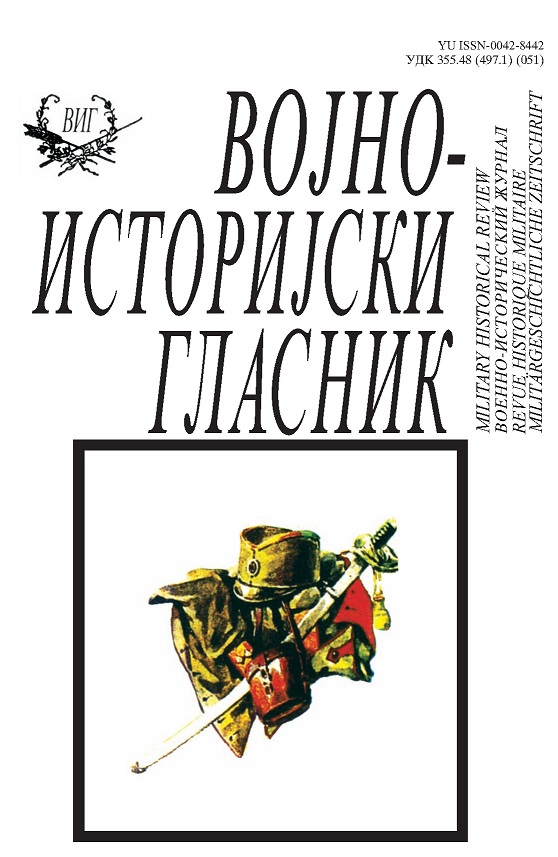Етнички сукоби на простору Новог Пазара и Рашке у јесен 1941. године
Ethnic Conflicts on the Territory of Novi Pazar and Raška in Autumn 1941
Author(s): Milutin ŽivkovićSubject(s): Military history, Political history, WW II and following years (1940 - 1949), Inter-Ethnic Relations, Peace and Conflict Studies
Published by: Institut za strategijska istraživanja
Keywords: Deževski county; Novi Pazar; Raška; Muslims; Serbs; Albanians; Azhif Hadžiahmetović; Mašan Đurović; Radomir Cvetić;
Summary/Abstract: In the national historiography, it has been written and spoken a lot about the tumultuous events in Serbia in the second half of 1941. However, attention was mainly focused on the areas that were the focus of antifascist resistance. Events in Sandžak, especially in its eastern part (Sjenica, Novi Pazar, Tutin) where there was not any intense resistance to the occupying forces, were somehow unfairly left out of scientific focus. Therefore, many topics related to the area of Sandžak in World War II have remained unexplored until now. One of them is the issue of political, economic and social structure of the ethnicreligious conflicts between Serbs on one and Albanians and Muslims (Bosniaks today) on the other side, in the region between Novi Pazar and Raška in autumn 1941. The aforementioned conflicts were fierce and lasted, with minor interruptions, from early October to early December 1941. During this period, the Chetnik units around Raška and Novi Pazar unsuccessfully tried to conquer Novi Pazar three times. On the other hand, the collaborative government of Novi Pazar, led by Aćif Hadžiahmetović Bljuta, attacked Raška with the help of several thousand Albanian kacaks (rebels) from Kosovo and Metohija. The basis for these unfortunate events was created since the first days of the occupation. Albanian collaborative regime installed by the Germans in Novi Pazar was trying by all means to get closer to Greater Albania and include the town and its surroundings within its borders. A political leader of the Albanians and Muslims from this area Aćif Hadžiahmetović was particularly engaged on this issue. On one hand, he carried out violent Albanization of Muslims, and conducted political, economic and military pressure on the Serbs on the other, in order to displace them. When in July 1941, feudal system was reinstalled in the area of Novi Pazar and its surroundings, the Serbs again, in the mid 20th century, became serfs and landless peasants. In New Pazar, Serbian population was exposed to various types of harassment, and there have been robberies and murders as well. They were mainly carried out by Albanian auxiliary troops from Kosovo and Metohija. As a reaction to these reprisals by early September 1941, in the region between Raška and Novi Pazar, several guerrilla detachments led by Kosta Pećanac and Dragoljub Mihailović were formed. After the German withdrawal from Raška and Novi Pazar in early October, in order to protect the Trepča mine, it was only a matter of time before the start of armed conflict. During the conflict, hundreds of combatants and civilians on both sides were killed, and great material damage was caused, hardly compensable for this extremely poor region. The destruction was followed by hunger and various diseases, which further exhausted both Serb and Muslim population. Thereby, none of the opposing parties achieved the intended goal. Novi Pazar has not become part of Greater Albania, but did not fall into the hands of local Chetnik detachments, either. Upon returning of Germans to the town on December 7, 1941, the whole area between Novi Pazar and Raška was pacified and brought under strict control, so that such things do not happen again.
Journal: Vojnoistorijski glasnik
- Issue Year: 2012
- Issue No: 2
- Page Range: 65-87
- Page Count: 23
- Language: Serbian

